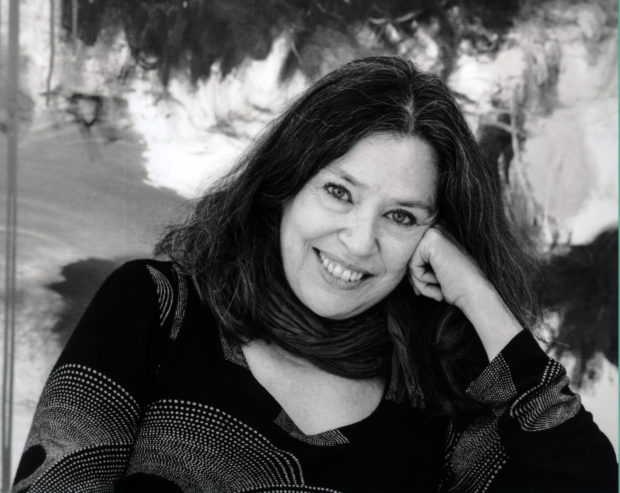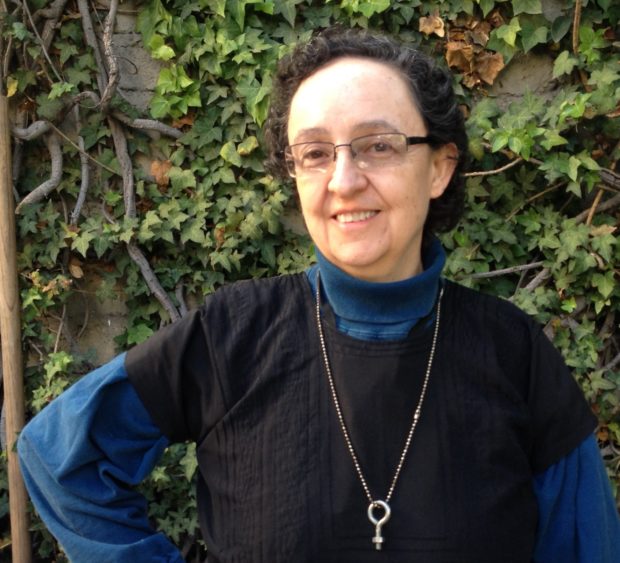GAME CHANGERS: WOMEN ARTISTS IN 1970s MEXICO – PANELISTS’ BIOS
 Carla Stellweg is a Latinamericanist who has worked as a museum and non-profit director, writer and editor, curator and professor. She is considered a pioneer and facilitator in the Latin American and Latino-US contemporary art field. Since her move to NY in 1982, Stellweg established herself as a prime point of contact introducing young and mid-career artists from Latin America, Latino-U.S., Cuba and the Caribbean working in conceptual, socially engaged art forms. Over the last 35 years, her Soho space has been widely used as a pied-à- terre for innumerable Pan-American artists, curators, collectors and individuals at all levels. She was and continues to be instrumental in introducing many young and mid-career artists from Latin America, Latino-U.S., Cuba and the Caribbean producing conceptual, socially-engaged art in both new and traditional media, either working in NY or from around the world. In 1973, she co-founded and edited the bilingual cutting-edge visual arts journal, Artes Visuales, Museo de Arte Moderno, Mexico, today recognized for its seminal role in promoting feminism, conceptual and socially relevant art.
Carla Stellweg is a Latinamericanist who has worked as a museum and non-profit director, writer and editor, curator and professor. She is considered a pioneer and facilitator in the Latin American and Latino-US contemporary art field. Since her move to NY in 1982, Stellweg established herself as a prime point of contact introducing young and mid-career artists from Latin America, Latino-U.S., Cuba and the Caribbean working in conceptual, socially engaged art forms. Over the last 35 years, her Soho space has been widely used as a pied-à- terre for innumerable Pan-American artists, curators, collectors and individuals at all levels. She was and continues to be instrumental in introducing many young and mid-career artists from Latin America, Latino-U.S., Cuba and the Caribbean producing conceptual, socially-engaged art in both new and traditional media, either working in NY or from around the world. In 1973, she co-founded and edited the bilingual cutting-edge visual arts journal, Artes Visuales, Museo de Arte Moderno, Mexico, today recognized for its seminal role in promoting feminism, conceptual and socially relevant art.
In 2010, Stanford Univ. Library purchased Ms. Stellweg’s 40-year archive, which every 5 years is complemented with additional materials covering here ongoing career. In 2012 MoMA acquired her collection of ephemera, artist books and mail art as well as rare portfolios. Since 2005 Ms. Stellweg has been a professor in the Visual Critical Studies and Art History Department at the School of Visual Arts, NY, conducting a seminar on that is Latin American & Latino Art? From 2015 – 2017 Ms. Stellweg contributed to the curators research and the subsequent exhibition catalog of Radical Women, Latin American and Latino women artists 1960-1985 as part of the PST Getty 2017, LA/LA in addition to other PST projects.
 Born in 1956 in Mexico City, Magali Lara lives and works in Cuernavaca, Morelos, where she is a professor of painting at the Universidad Autónoma del Estado de Morelos. She studied Visual Arts at ENAP and has been member of the Sistema Nacional de Creadores de Arte since 1994. Lara’s work evidences a deep relationship between literature and visual arts; as she says, “the idea of visual poetry is central for most of my work”. Her practice includes painting, drawing, artists’; books, ceramics, tapestry and, more recently, video animation. She has had several solo shows, including Mi versión de los hechos (My version of the Facts) at MUCA in Mexico City (2004-5); Alzheimer at the Museo de la Secretaría de Hacienda y Crédito Público in Mexico City (2007); Glaciares (Glaciers) at the Visual Arts Center, University of Texas at Austin (2010); Animaciones (Animations) at the Museo Amparo in Puebla (2012); Intemperie at the Museo Nacional de la Estampa in Mexico City (2015); Infancia y Eso (Childhood and That) at WALDEN Gallery in Buenos Aires (2016); Interioridad en el Jardín. Pinturas 1985-2016 (The Intimacy of the Garden. Paintings 1985-2016) at Jardín Borda in Cuernavaca, and Del verbo ‘Estar’ (Verb ‘To Be’) at the Museo Universitario del Chopo in Mexico City (2017). She has also participated in important group exhibitions in Mexico, the US, Europe and Latin America.
Born in 1956 in Mexico City, Magali Lara lives and works in Cuernavaca, Morelos, where she is a professor of painting at the Universidad Autónoma del Estado de Morelos. She studied Visual Arts at ENAP and has been member of the Sistema Nacional de Creadores de Arte since 1994. Lara’s work evidences a deep relationship between literature and visual arts; as she says, “the idea of visual poetry is central for most of my work”. Her practice includes painting, drawing, artists’; books, ceramics, tapestry and, more recently, video animation. She has had several solo shows, including Mi versión de los hechos (My version of the Facts) at MUCA in Mexico City (2004-5); Alzheimer at the Museo de la Secretaría de Hacienda y Crédito Público in Mexico City (2007); Glaciares (Glaciers) at the Visual Arts Center, University of Texas at Austin (2010); Animaciones (Animations) at the Museo Amparo in Puebla (2012); Intemperie at the Museo Nacional de la Estampa in Mexico City (2015); Infancia y Eso (Childhood and That) at WALDEN Gallery in Buenos Aires (2016); Interioridad en el Jardín. Pinturas 1985-2016 (The Intimacy of the Garden. Paintings 1985-2016) at Jardín Borda in Cuernavaca, and Del verbo ‘Estar’ (Verb ‘To Be’) at the Museo Universitario del Chopo in Mexico City (2017). She has also participated in important group exhibitions in Mexico, the US, Europe and Latin America.
In a 2004 exhibition catalogue, curator and critic Jose Luis Barrios described Lara’s body of works as a counterpoint between hospitality and hostility. Her early works depicting household utensils —irons, an ironing board, a fridge, baby dummies and bottles— and, later on, her flower paintings speak of a feminine world; however, her images convey a more corporeal and disturbing vision of male identity. “The meaning of Magali Lara’s flower motives is seen from the boundary between beauty and horror”, Barrios explains.
Lara is particularly well known for her artists’ books. She recalls that before studying art she imagined herself as a writer, and confesses to being a compulsive reader. “(Artists’ books) are one of the first forms I used”, she says. “I found them to be a perfect device to express my double vocation… With them I could narrate with images, use the text as a visual medium… It also allowed me to experiment with graphic processes, serigraphy, press, etching.”
In her series of engravings entitled Alzheimer (2007) it is obvious how Lara works with profound emotion through pure, expressionistic gestures. “My mother had Alzheimer’s; the disease was a way to access into her memories, and also to understand the way we are built. Our minds are constructed in a very arbitrary way. People with this disease are left with just a few memories, and they are usually not the ones you would deem most important; they don’t remember the day they were married, they remember a moment when their mother gave them ice cream. Despite being simple, the ones that remain are powerful memories. You get to see which were someone’s last remembrances.” The main motif in this series is a
spiral, a ravelling and unravelling of lines. Alzheimer later appeared in one of the artist’s animations, No me acuerdo (I Don’t Remember) (2008), in which she created a video about the process of drawing.
On her current work, Lara says, “I drew flowers from my thirties to my fifties. At that time, I worked a lot with the theme of reproduction, not only in the sense of procreation but in that of repetition of attitudes, of reconstructing old situations, some from the family structure…However, today I find myself to be closer to those drawings I used to make when I was younger. It has to do with the flexibility and difficulty of trying to know who you really are, and also how in my particular case literature and art co-exist. Maybe today there is still a feminine voice in the way that I organize space, but today that is no longer my priority.” Her latest series Melancolía (Melancholy) and El Futuro (The Future) were inspired by the ancient Mayan belief that the world would end in December 2012, an idea that triggered different reflections on life and death.
 Mónica Mayer studied Visual Arts in Mexico, received an MA in Sociology of Art from Goddard College and participated in the Feminist Studio Workshop at the Woman’s Building in Los Angeles in the seventies. Her work as an artist includes performance, drawing, writing, teaching and activism. She founded Polvo de Gallina Negra (Black Hen’s Dust) – the first feminist art collective in Mexico- with Maris Bustamante in 1983. In 1989, with Victor Lerma she started Pinto mi Raya, a long term applied conceptual art project whose goal is to lubricate the art system. Mayer has published several books, including Rosa chillante: mujeres y performance en México (Bright Pink: Women and Performance in Mexico) and wrote for El Universal newspaper for twenty years. She has participated in major international exhibitions such as WACK: Art and the Feminist Revolution and Radical Women. Latin American Art. 1960 – 1985. She is a member of the Sistema Nacional de Creadores.
Mónica Mayer studied Visual Arts in Mexico, received an MA in Sociology of Art from Goddard College and participated in the Feminist Studio Workshop at the Woman’s Building in Los Angeles in the seventies. Her work as an artist includes performance, drawing, writing, teaching and activism. She founded Polvo de Gallina Negra (Black Hen’s Dust) – the first feminist art collective in Mexico- with Maris Bustamante in 1983. In 1989, with Victor Lerma she started Pinto mi Raya, a long term applied conceptual art project whose goal is to lubricate the art system. Mayer has published several books, including Rosa chillante: mujeres y performance en México (Bright Pink: Women and Performance in Mexico) and wrote for El Universal newspaper for twenty years. She has participated in major international exhibitions such as WACK: Art and the Feminist Revolution and Radical Women. Latin American Art. 1960 – 1985. She is a member of the Sistema Nacional de Creadores.